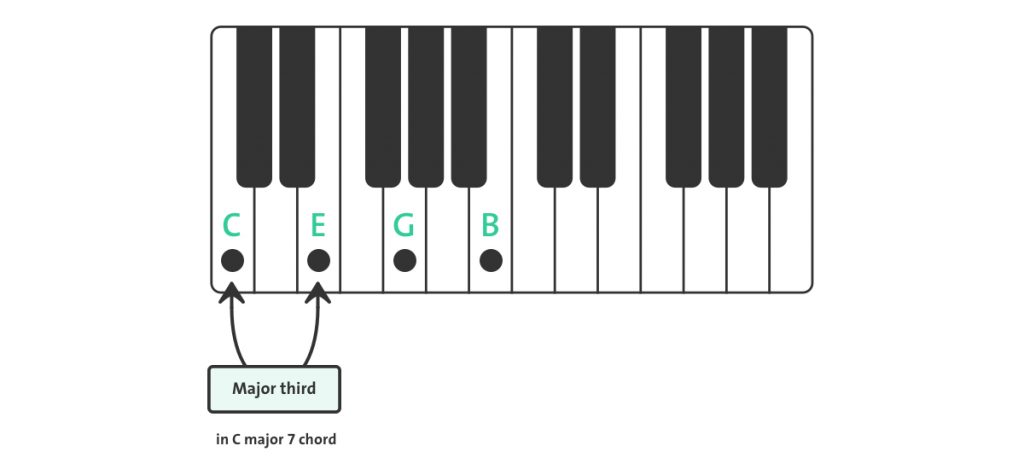Major is perhaps one of the most popular words you come across when you start making music. It is one of the fundamental musical terms, which can be applied to different objects in music:
- Major key
- Major intervals
- Major chords
- Major scales
Major key
In general, the term major is used to describe the key of a piece of music. Is the music you’re playing, hearing or composing in the major vibe? In other words, does it sound joyful and positive? If so, we say: “This music is in the major key.”
Examples of major keys are C major, D major, B major, Eb major, Ab major, etc.
What’s a key signature?
The key is referred to in sheet music notation with a key signature. The key signature is a combination of sharps (#) and flats (b) placed on the staff lines right after the clef. The symbols are placed on those lines that correspond to the notes of the scale that are pitched higher or lower.
For example, the D major scale consists of the following notes: D, E, F♯, G, A, B, C♯. This is indicated with the key signature of two sharps (#) placed on the staff lines that correspond to the F and C.

Two sharps (#)
The key and the tonic center
The key also marks the tonic center and tonic chord of a musical piece. Chord progressions in songs and compositions often end on the tonic chord. This chord will sound very stable, due to the direct connection with the key of our song.
If, for instance, our song is in the C major key, then the tonic chord will be the C major chord. If our song is in the D major key, then the tonic chord will be? Right! The D major chord.
What is the difference between the major and minor key?
First of all, there’s a difference in the main mood. We experience the major key as uplifting, happy and cheerful. While the minor key is characterized by an experience of melancholy and sadness.
The major key is characterized by the main major scale and the major tonic chord. The minor key is characterized by the main minor scale and the minor tonic chord.
What are major intervals?
Major is related to four music intervals: the second, third, sixth and seventh. Each of these intervals has two versions: smaller or larger. The difference between smaller and larger versions is the number of tones and semitones between the notes. The word major stands for the larger version; the word minor for the smaller.
For instance, the major second consists of one tone; the minor second consists of one semitone.

Major intervals

Major intervals on piano
What is a major chord?
A major chord sounds happy, joyful and optimistic. A basic major chord consists of three notes that create two intervals: a major third and a minor third. It is this sound that our ear perceives as a major tone.
In a major chord, the first note (known as the root note) and the second note create a major third interval. The second note and the third note create a minor third interval. When a major chord consists of just these three basic notes it is called a major triad.
For instance, the C major chord, a triad, consists of a root note C, a second note E and a third note G. In the picture below, you can see how the C major triad is played on a keyboard.
The major third is a very important interval within this chord because it forms these positive, optimistic and happy major vibes. Simply put, we perceive it as a major sound because of this major third interval between the first (root) and second note.

Major triad on piano
Here is an example of the C major seventh chord on piano, with the indication of the major third interval:

Major third interval on piano
What’s the difference between a major chord and a minor chord?
In terms of sound, the major chord creates positive, joyful “major” vibes. The minor chord creates melancholic, sad vibes. Technically, the difference between major and minor chords is in the interval between the first (root) and second note of the chord. In the case of a major chord, this interval is a major third. In case of a minor chord, it’s a minor third.
A major or minor interval creates the main sound of the chord, making it major or minor.
Major scales
Major is connected to the characterization of the scale. The simplest example of a major scale is the C major scale, which are all the white keys on the piano keyboard from one C note to another C note one octave higher.
Again, major scales have these “major” vibes. Play and listen to any major scale on your instrument and recognize these happy vibes. One of the characteristics of the major scale is the major third interval between the root note and the third note of a scale.

Major third